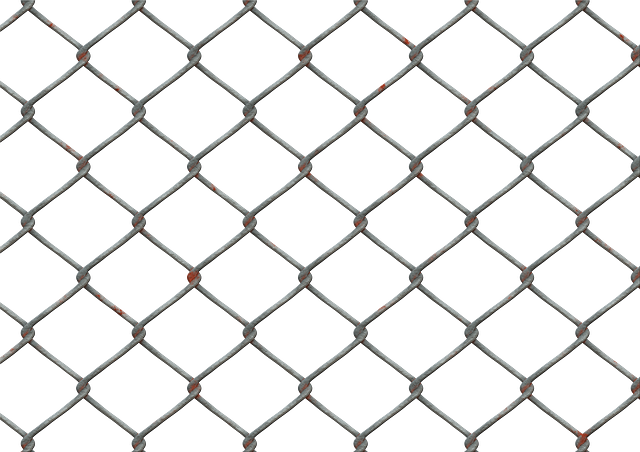Large properties present unique fencing challenges, demanding durable, cost-effective solutions that can span vast distances. This article explores diverse and affordable fencing options tailored to extensive land areas, from traditional materials like wood and vinyl to robust alternatives such as chain link, wrought iron, and aluminum. We also delve into low-maintenance concrete and metal choices, as well as the benefits of DIY installations for significant cost and time savings.
- Understanding Fencing Needs for Large Properties
- Budget-Friendly Materials: Wood and Vinyl
- Chain Link Fences: Durable and Cost-Effective
- Creative Alternatives: Wrought Iron and Aluminum
- Low-Maintenance Options: Concrete and Metal
- DIY Fencing: Saving Costs and Time
Understanding Fencing Needs for Large Properties
Large properties come with unique fencing challenges. These expansive spaces require fences that can withstand significant distances, diverse terrains, and often, harsh environmental conditions. Understanding these specific needs is crucial before investing in fencing solutions.
Factors like security, privacy, aesthetics, and budget play a significant role in the choice of fence type and design. For instance, a property with a view might prioritize an aesthetically pleasing fence that complements the landscape, while a farm may require a robust, durable barrier to keep livestock in and intruders out. Each large property is unique, necessitating tailored fencing solutions for optimal functionality and visual appeal.
Budget-Friendly Materials: Wood and Vinyl
When considering fencing options for large properties on a budget, wood and vinyl emerge as popular choices due to their affordability and versatility. Wooden fences have long been a traditional option, offering a natural aesthetic that complements various landscapes. While initial costs may be lower than more exotic materials, wood requires regular maintenance to prevent rot, insect damage, and color fading, which can increase upkeep expenses over time.
Vinyl fencing represents another cost-effective alternative known for its durability and low-maintenance requirements. This material is resistant to rot, mold, and pests, ensuring a long-lasting barrier with minimal upkeep. Vinyl’s versatility allows it to mimic the look of wood or adopt more modern designs, providing both functional protection and enhanced curb appeal without breaking the bank.
Chain Link Fences: Durable and Cost-Effective
Chain link fences are a popular choice for large properties due to their exceptional durability and cost-effectiveness. These fences, made from sturdy metal wire, offer a robust barrier that can withstand various environmental conditions, including strong winds and heavy rainfall. Their strength lies in the tight weave of the wire, which prevents damage from debris or animals.
Moreover, chain link fences are highly versatile, suitable for both residential and commercial spaces. They can be easily installed and maintained, making them a cost-efficient option. The simple process of attaching the wires to posts ensures quick assembly, while regular cleaning and inspections keep the fence in top condition. This low-maintenance nature contributes to their longevity, making them a smart investment for property owners seeking both security and affordability.
Creative Alternatives: Wrought Iron and Aluminum
When considering fencing options for large properties, traditional materials like wood or vinyl can be expensive and may require frequent maintenance. However, there are creative alternatives that offer both affordability and durability. Wrought iron and aluminum fences are excellent choices for those seeking a unique, long-lasting solution.
Wrought iron, known for its strength and beauty, can provide an elegant and secure boundary. Its classic design adds character to any property while offering resistance to rust and decay when properly maintained. Aluminum, on the other hand, is lightweight yet robust, making it ideal for expansive areas as it requires less support and can be easily installed. These materials offer a range of styles and designs, allowing homeowners to find the perfect fit that complements their large-scale landscape.
Low-Maintenance Options: Concrete and Metal
Concrete and metal are two low-maintenance fencing options ideal for large properties. Concrete, known for its durability and longevity, requires minimal upkeep aside from occasional sealing to protect against stains. It offers a robust and aesthetically pleasing alternative to traditional wooden fences, with a wide range of styles and colors available to match any landscape design.
Metal, particularly steel or aluminum, is another excellent choice due to its resistance to rot, rust, and pests. Metal fences are versatile, easy to install, and can be designed to fit various aesthetic preferences, from sleek modern lines to traditional decorative patterns. Regular cleaning with a mild detergent is often all that’s needed to keep metal fences looking their best, making them a practical and cost-effective solution for large properties.
DIY Fencing: Saving Costs and Time
DIY fencing is an attractive option for property owners looking to save on costs and time when enhancing their outdoor spaces. By taking on the project yourself, you bypass the expense of hiring professional installers, which can significantly reduce overall budgeting. Many modern tools and resources make the process more accessible than ever, with detailed online guides and video tutorials available to walk you through each step.
This approach not only saves money but also empowers homeowners to customize their fencing according to personal preferences and property needs. From selecting the perfect material—wood, vinyl, or metal—to designing unique styles and installing it efficiently, DIY fencing offers a rewarding solution for those eager to take control of their home improvement ventures.
